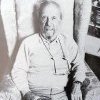1960s
1960
1961
Lester Bostock arrives in Glebe from the Coraki reserve. His relatives have earlier come from the Acacia Ridge Reserve, Brisbane to escape the Queensland police system but Lester recalls, ‘in Sydney it was also bad’, especially the 21st Division, later known as the Special Branch. Lester gets a beating from the police using rubber hoses and wet towels. ‘I got gangrene from the beating and my [foot?] had to be amputated’. He stays in Glebe until 1982, when it gets too expensive for him. Then in the 1960s people, he relates, begin shifting from the inner city tenements out to Campbell Town and Mt Druitt. And those who suffered the atrocities in the inner city are very angry’. (Plater, pp. 152-154)
Ruby Langford Smith recalls that ‘The only meeting place for us Kooris was a pub called the Empress. Us Koories called it the Big E. It was a place where if you had just arrived from the bush and was looking for your 'rellies', you’d go to the Big E and someone would know where your people were livin. It was that kind of place, the Big E.’
Lester Bostock recalls that Aboriginal people were not allowed to drink in the Southern Hotel in Broadway. The unions supporting the APA (Aboriginals Protection Association) hold a protest at Koori people, not being allowed to drink at his pub by having an Aboriginal man ask for a beer and a journalist wrote about it. (Sunday Mirror, 12th of March, 1961‘Slums in the Sun’). Koories are members of the Building Workers Industrial union, the Seamen’s Union, the Liquor and Allied Trades, the Miscellaneous Workers Union, Wharf Labourers, Firemen and Deckhands, the Federal Fire Fighters, the AMWU and the Bank Employees. (Plater, p. 138)
Uncle Chicka Madden is offered a job, with the help of Ossie Cruse (whom he knows from the Burragorang Dam work gangs) as a concrete pourer in the construction of the Gladesville Bridge. His later employment includes Tarban Creek Bridge, Roseville Bridge, the Qantas building in the city, and British Motor Corporation.
1962
There are two models of Aboriginal advancement current in Sydney, the ‘Welfare’ model and the more radical ‘Change from the Top’ model. Both models are dominated by non-Koori people. One Sydney organisation following the Welfare model will be the Foundation for Aboriginal Affairs. An example of ‘Change from the Top,’ is the Australian Aboriginal Fellowship and the national organisation into which it will merge: the Federal Council for the Advancement of Aboriginal and Torres Strait Islanders (FCAATSI). (Read, p. 84) V 53, (‘First and foremost Aboriginal people had to be citizens’)
1963
Kirinari Hostel is established by the Aboriginal Hostels Association. See Stories for more information. http://web1.gymeah.schools.nsw.edu.au/index.php?option=com_content&view=.... (V41, ‘Hostels, to me, is a sense of family history’)
The Foundation for Aboriginal Affairs opens at 810 George St. Its objects include providing assistance in such matters as housing, employment education, problems of adjustment, legal advice, medical assistance and financial difficulties. The facilities eventually include a gymnasium, a library, meeting rooms, lounges, rooms for sewing, counselling, adult education, short term accommodation and a young people’s hostel. Sub-committees are formed for research, social welfare, fundraising, education, public relations, entertainment, a news sheet, dancing group, women’s auxiliary, and the Thursday Club. Funds are mainly drawn from the annual donation-appeal throughout Sydney. The patron is the State Governor. On the Advisory Board are doctors, a form deputy Police Commissioner, a Vice Chancellor, the Cardinal and the Archbishop, a judge, bankers, lawyers and the lord mayor. (C93) (V18, Gordon Briscoe’s Redfern: the Foundation for Aboriginal Affairs’)
1964
Inner city residents recall the frantic urgency of finding two shillings to restart the electricity meter for the rental TV when it stops mid-program.
The Foundation for Aboriginal Affairs continues to grow. Its supporters include the waterside workers Chicka Dixon and Jack Hassan, and the boxers Roy Carroll and Teddy Rainbow. Tom Williams of La Perouse is the manager. Other members of committees or the executive are Herb Simms, Eileen Perkins, Elsa Dixon, Louisa Ingram, Billy Mumbler, Candy Williams, Shirley Smith and Joyce Mercy.
1965
The Freedom Ride, led by Charles Perkins, tours NSW towns known to practise racial discrimination. It departs from the University of Sydney. When the Freedom Ride students return a fortnight later, many Aboriginal people welcome them and their supporters, including Gordon Briscoe, Norma Briscoe, Eileen Perkins, Neville Perkins (Charles’s nephew) and Gary Williams. Gordon recalls, ‘As the Freedom Ride bus pulled up outside Charlie’s house in Glebe we had a large trestle prepared with full of food and drinks to serve the protestors and the press’. (Briscoe, p. 111)
1966
Gordon Briscoe describes the general manager of the foundation, Charles Perkins, as ‘a kind of evangelical populist where his raison d’être was to be a spokesperson for Aborigines and although dressed like a top line professional Italian footballer, he identified as, and spoke like, a fringe camp riverbank black.’ (Briscoe, p. 112)
Ruby Langford Ginibi recalls, ‘There were lots of things going on around the city of Sydney in the 60's. We Koories had a football team called the Redfern All Blacks who were sponsored by South Sydney Leagues Club. (Heiss, p. 66) (V13, ‘The Redfern All Blacks’) (V30, ‘Uncle Chicka Madden’s Redfern: the Redfern All Blacks’) (V31, ‘Redfern oval was full of blackfellers’)
1967
Roy Carroll, a former champion boxer, is running a gymnasium in Chippendale and has a contract to provide boxing bouts at the Marrickville RSL. Doug Scott, a cousin of Roy, has amassed a team of trotting horses. Chicka Dixon and Roy Carroll suggest that the Foundation for Aboriginal Affairs implement a service that meets young Aboriginal people arriving from the country and help them to find a place to stay and get work quickly. (V21, ‘Koori lads training at Ray Horne’s gym’)
Chicka Dixon, working at the Foundation for Aboriginal Affairs, remembers: ‘What we needed was a place we could go socially and we picked the area in George St purposely. I had a big sign put up at Central railway, ‘Aboriginals, visit your Foundation’. If they need a little bit of help – they’re coming in fly blown – we give out food orders, a chit to get a three-course meal next door. Fellas coming out of jail. We had a hell of a lot of donations of clothes and that. People’d come and get a bit of beer. If you’re talking about a typical day there’s no such thing. A lot of problems. Social problems. (V18, Gordon Briscoe’s Redfern – the Foundation for Aboriginal Affairs’)
1968
‘Nugget’ Coombs (Herbert Cole Coombs) supports Aboriginal people as he becomes the chairman of the Australian Council for Aboriginal Affairs, meeting with Aboriginal community leaders in Redfern and all over Australia. The Council is set up in the wake of the 1967 referendum. Coombs becomes a close advisor to the Labor leader Gough Whitlam and largely writes Labor's policy on Aboriginal affairs, particularly the commitment to Aboriginal Land Rights.
Skilled and unskilled work is available at WD and HO Wills (cigarette manufacturer), Packards Shoes at Waterloo, tanneries on Botany Road, confectionery factories, the British Motor Corporation, Butler and Norman bottle washing, Federal Matches, Shelleys Soft Drinks, Price Alfred Hospital for orderlies and laundry workers - but still very few Koori people are secretaries, and fewer still executives.
Tony Mundine arrives to play football with the Redfern All Blacks, and stays on for another season. He take up boxing to keep himself fit and later becomes a World Champion. He holds the Australian Middleweight, Light Heavyweight, Cruiserweight and Heavyweight title, plus the Commonwealth middleweight and Light Heavyweight titles and is the only Australian boxer to compete in four weight divisions. (V33, ‘How Tony Mundine went from football to boxing’)
1969
The Empress Hotel in Regent Street, near Central, (also known as the Big E) is an important meeting point for new arrivals, and one of the few pubs where Koori people are allowed (by the publicans) to drink. Ruby Langford remembers it as the place to find out where your relatives live and who is having an affair with whom. Other well known Aboriginal pubs are the Clifton Gardens and the Cricketers Arms. Ruby writes ‘There was another pub called the Clifton Hotel down Botany Road. It stayed open ‘til midnight, so when the Big E closed its doors at 10pm, down the road to the Clifton we’d all trudge, ‘cos they had bands playin’ there and we carried on regardless. ‘And I remember there was a curfew then, and police would hunt Koories off the streets ‘cos they had to be inside by 10pm or the police would pick them up and put them in the paddy wagon just to make up the numbers. It was only Blackfellas they did this to. Every Thursday, Friday and Saturday night you would count three paddy wagons lined up outside the ‘Big E’ waiting to round up the Koories to make their numbers up’. (V54, ‘Gordon Briscoe’s Redfern: The police were at war with us’)











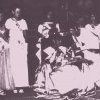
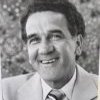
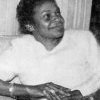
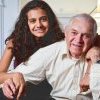
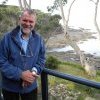
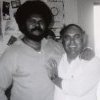

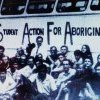
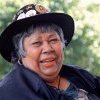
 and Bob Maza_0.thumbnail.JPG)
